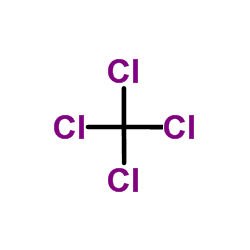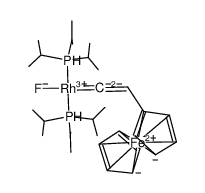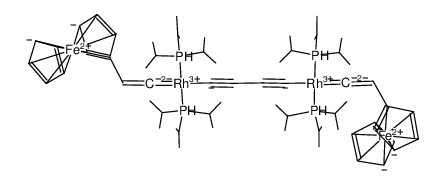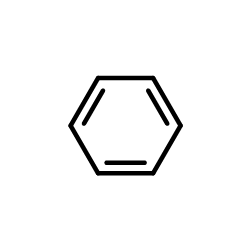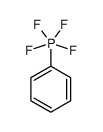379-52-2
| 中文名 | 三苯基氟化锡 |
|---|---|
| 英文名 | triphenyltin fluoride |
| 英文别名 |
FLUOROTRIPHENYLTIN
biomet204 Triphenylfluorstannan Triphenylzinnfluorid EINECS 206-833-8 MFCD00015356 fluorotriphenyl-ti TRIPHENYLFLUOROTIN triphenyl tin fluoride fluorotriphenylstannane Triphenyltin fluoride fluorotriphenyl-stannan fentin fluoride |
| 沸点 | 385.8ºC at 760mmHg |
|---|---|
| 熔点 | 281 °C |
| 分子式 | C18H15FSn |
| 分子量 | 369.01100 |
| 闪点 | 187.1ºC |
| 精确质量 | 370.01800 |
| LogP | 2.62300 |
| 分子结构 | 1、 摩尔折射率:30.47 2、 摩尔体积(cm3/mol):130.8 3、 等张比容(90.2K):284.0 4、 表面张力(dyne/cm):22.2 5、 极化率(10-24cm3):12.08 |
| 更多 | 一、物性数据 性状:不可用 密度(g/mL,25/4℃):不可用 相对蒸汽密度(g/mL,空气=1):不可用 熔点(ºC):281 沸点(ºC,常压):不可用 沸点(ºC,5.2kPa):不可用 折射率:不可用 闪点(ºC):不可用 比旋光度(º):不可用 自燃点或引燃温度(ºC):不可用 蒸气压(kPa,25ºC):不可用 饱和蒸气压(kPa,60ºC):不可用 燃烧热(KJ/mol):不可用 临界温度(ºC):不可用 临界压力(KPa):不可用 油水(辛醇/水)分配系数的对数值:不可用 爆炸上限(%,V/V):不可用 爆炸下限(%,V/V):不可用 溶解性:不可用 |
Synonym:Fluorotriphenylstannane Section 2 - COMPOSITION, INFORMATION ON INGREDIENTS
Risk Phrases: 23/24/25 37/38 41 50/53 Section 3 - HAZARDS IDENTIFICATION EMERGENCY OVERVIEW
Toxic by inhalation, in contact with skin and if swallowed. Irritating to respiratory system and skin. Risk of serious damage to eyes. Very toxic to aquatic organisms, may cause long-term adverse effects in the aquatic environment. Potential Health Effects Eye: Causes eye irritation. May cause redness, pain, blurred vision and possible eye damage. Skin: Causes skin irritation. Harmful if absorbed through the skin. Ingestion: Harmful if swallowed. May cause gastrointestinal irritation with nausea, vomiting and diarrhea. Inhalation: Harmful if inhaled. Causes respiratory tract irritation. Chronic: Exposure limits have been recommended for organotin compounds to minimize the potential for adverse effects on immune function and the CNS. Section 4 - FIRST AID MEASURES Eyes: Immediately flush eyes with plenty of water for at least 15 minutes, occasionally lifting the upper and lower eyelids. Get medical aid. Do NOT allow victim to rub eyes or keep eyes closed. Skin: Flush skin with plenty of water for at least 15 minutes while removing contaminated clothing and shoes. Get medical aid if irritation develops or persists. Wash clothing before reuse. Ingestion: Do not induce vomiting. If victim is conscious and alert, give 2-4 cupfuls of milk or water. Get medical aid. Inhalation: Remove from exposure and move to fresh air immediately. If not breathing, give artificial respiration. If breathing is difficult, give oxygen. Get medical aid. Notes to Physician: Treat symptomatically and supportively. Section 5 - FIRE FIGHTING MEASURES General Information: As in any fire, wear a self-contained breathing apparatus in pressure-demand, MSHA/NIOSH (approved or equivalent), and full protective gear. During a fire, irritating and highly toxic gases may be generated by thermal decomposition or combustion. Extinguishing Media: Use agent most appropriate to extinguish fire. Use water spray, dry chemical, carbon dioxide, or appropriate foam. Section 6 - ACCIDENTAL RELEASE MEASURES General Information: Use proper personal protective equipment as indicated in Section 8. Spills/Leaks: Vacuum or sweep up material and place into a suitable disposal container. Clean up spills immediately, observing precautions in the Protective Equipment section. Avoid generating dusty conditions. Provide ventilation. Section 7 - HANDLING and STORAGE Handling: Wash thoroughly after handling. Remove contaminated clothing and wash before reuse. Use with adequate ventilation. Minimize dust generation and accumulation. Avoid breathing dust. Do not get in eyes. Avoid contact with skin and clothing. Storage: Store in a cool, dry, well-ventilated area away from incompatible substances. Keep containers tightly closed. Section 8 - EXPOSURE CONTROLS, PERSONAL PROTECTION Engineering Controls: Facilities storing or utilizing this material should be equipped with an eyewash facility and a safety shower. Use adequate general or local exhaust ventilation to keep airborne concentrations below the permissible exposure limits. Exposure Limits CAS# 379-52-2: United Kingdom, WEL - TWA: (listed as tin organic compounds): 0.1 mg/m3 TWA (except cyhexatin, as Sn) United Kingdom, WEL - STEL: (listed as tin organic compounds): 0. mg/m3 STEL (except cyhexatin, as Sn) United States OSHA: 0.1 mg/m3 TWA (as Sn) (listed under Tin orga compounds). Belgium - TWA: (listed as tin organic compounds): 0.1 mg/m3 VLE ( Sn) Belgium - STEL: (listed as tin organic compounds): 0.2 mg/m3 VLE Sn) France - VME: (listed as tin organic compounds): 0.1 mg/m3 VME (a Sn) France - VLE: (listed as tin organic compounds): 0.2 mg/m3 VLE (a Sn) Germany: (listed as tin organic compounds): 0.1 mg/m3 VME (as Sn) Germany: (listed as tin organic compounds): Skin absorber Malaysia: (listed as tin organic compounds): 0.1 mg/m3 TWA (as Sn Netherlands: (listed as tin organic compounds): 0.2 mg/m3 STEL (a Sn) Netherlands: (listed as tin organic compounds): 0.1 mg/m3 MAC (as Spain: (listed as tin organic compounds): 0.1 mg/m3 VLA-ED (as Sn Spain: (listed as tin organic compounds): 0.2 mg/m3 VLA-EC (as Sn Personal Protective Equipment Eyes: Wear appropriate protective eyeglasses or chemical safety goggles as described by OSHA's eye and face protection regulations in 29 CFR 1910.133 or European Standard EN166. Skin: Wear appropriate protective gloves to prevent skin exposure. Clothing: Wear appropriate protective clothing to prevent skin exposure. Respirators: Follow the OSHA respirator regulations found in 29 CFR 1910.134 or European Standard EN 149. Use a NIOSH/MSHA or European Standard EN 149 approved respirator if exposure limits are exceeded or if irritation or other symptoms are experienced. Section 9 - PHYSICAL AND CHEMICAL PROPERTIES Physical State: Powder Color: white to off-white Odor: Not available. pH: Not available. Vapor Pressure: Not available. Viscosity: Not available. Boiling Point: Not available. Freezing/Melting Point: > 281 deg C Autoignition Temperature: Not applicable. Flash Point: Not applicable. Explosion Limits, lower: Not available. Explosion Limits, upper: Not available. Decomposition Temperature: Solubility in water: Specific Gravity/Density: Molecular Formula: C18H15FSn Molecular Weight: 369.01 Section 10 - STABILITY AND REACTIVITY Chemical Stability: Stable at room temperature in closed containers under normal storage and handling conditions. Conditions to Avoid: Dust generation, excess heat, confined spaces. Incompatibilities with Other Materials: Strong oxidizing agents. Hazardous Decomposition Products: Irritating and toxic fumes and gases, tin/tin oxides, fluoride fumes. Hazardous Polymerization: Has not been reported Section 11 - TOXICOLOGICAL INFORMATION RTECS#: CAS# 379-52-2: WH8275500 LD50/LC50: CAS# 379-52-2: Skin, rabbit: LD50 = 1000 mg/kg. Carcinogenicity: Triphenyltin fluoride - Not listed by ACGIH, IARC, or NTP. Other: See actual entry in RTECS for complete information. Section 12 - ECOLOGICAL INFORMATION Other No information available. Section 13 - DISPOSAL CONSIDERATIONS Dispose of in a manner consistent with federal, state, and local regulations. Section 14 - TRANSPORT INFORMATION IATA Not regulated as a hazardous material. IMO Not regulated as a hazardous material. RID/ADR Not regulated as a hazardous material. Section 15 - REGULATORY INFORMATION European/International Regulations European Labeling in Accordance with EC Directives Hazard Symbols: T N Risk Phrases: R 23/24/25 Toxic by inhalation, in contact with skin and if swallowed. R 37/38 Irritating to respiratory system and skin. R 41 Risk of serious damage to eyes. R 50/53 Very toxic to aquatic organisms, may cause long-term adverse effects in the aquatic environment. Safety Phrases: S 26 In case of contact with eyes, rinse immediately with plenty of water and seek medical advice. S 27 Take off immediately all contaminated clothing. S 28A After contact with skin, wash immediately with plenty of water. S 45 In case of accident or if you feel unwell, seek medical advice immediately (show the label where possible). S 60 This material and its container must be disposed of as hazardous waste. S 61 Avoid release to the environment. Refer to special instructions/safety data sheets. WGK (Water Danger/Protection) CAS# 379-52-2: 3 Canada CAS# 379-52-2 is listed on Canada's DSL List. CAS# 379-52-2 is not listed on Canada's Ingredient Disclosure List. US FEDERAL TSCA CAS# 379-52-2 is not listed on the TSCA inventory. It is for research and development use only. SECTION 16 - ADDITIONAL INFORMATION N/A |
|
毒理学数据: 二、毒理学数据: 急性毒性:不可用。 生态学数据: 三、生态学数据: 1、其它有害作用:该物质对环境可能有危害,对水体应给予特别注意。 CHEMICAL IDENTIFICATION
HEALTH HAZARD DATAACUTE TOXICITY DATA
|
| 危害码 (欧洲) | T: Toxic;N: Dangerous for the environment; |
|---|---|
| 风险声明 (欧洲) | 23/24/25-50/53 |
| 安全声明 (欧洲) | S36/37/39-S45-S61-S60-S28-S27-S26 |
| 危险品运输编码 | 3146 |
| RTECS号 | WH8275500 |
| 包装等级 | III |
| 危险类别 | 6.1 |
| 海关编码 | 2903999090 |
|
~93% 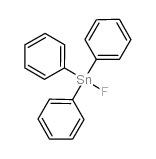
379-52-2 |
| 文献:Bai, Haiping; Harris, Robin K.; Reuter, Hans Journal of Organometallic Chemistry, 1991 , vol. 408, # 2 p. 167 - 172 |
|
~86% 
379-52-2
详细
|
| 文献:Chandrasekhar, Sosale; Latour, Stephan; Wuest, James D.; Zacharie, Boulos Journal of Organic Chemistry, 1983 , vol. 48, # 21 p. 3810 - 3813 |
|
~% 
379-52-2 |
| 文献:Brinckman,F.E.; Stone,F.G.A. Journal of the American Chemical Society, 1960 , vol. 82, p. 6218 - 6223 Full Text View citing articles Show Details Sharp, D. W. A.; Winfield, J. M. Journal of the Chemical Society, 1965 , p. 2278 - 2279 |
|
~0% 
379-52-2 |
| 文献:Callejas-Gaspar, Berta; Laubender, Matthias; Werner, Helmut Journal of Organometallic Chemistry, 2003 , vol. 684, # 1-2 p. 144 - 152 |
|
~% 
379-52-2 |
| 文献:Sharp, D. W. A.; Winfield, J. M. Journal of the Chemical Society, 1965 , p. 2278 - 2279 |
|
~% 
379-52-2 |
| 文献:Sharp, D. W. A.; Winfield, J. M. Journal of the Chemical Society, 1965 , p. 2278 - 2279 |
|
~% 
379-52-2 |
| 文献:Sharp, D. W. A.; Winfield, J. M. Journal of the Chemical Society, 1965 , p. 2278 - 2279 |
| 海关编码 | 2903999090 |
|---|---|
| 中文概述 | 2903999090 其他芳烃卤化衍生物. 增值税率:17.0% 退税率:9.0% 监管条件:无 最惠国关税:5.5% 普通关税:30.0% |
| 申报要素 | 品名, 成分含量, 用途 |
| Summary | 2903999090 halogenated derivatives of aromatic hydrocarbons VAT:17.0% Tax rebate rate:9.0% Supervision conditions:none MFN tariff:5.5% General tariff:30.0% |



